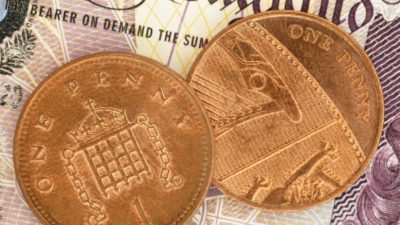Generating passive income from a portfolio of shares in retirement is the dream for many. It’s certainly what I plan to do. The State Pension offers a solid baseline income, but it won’t be enough on its own.
If I had £50,000 of savings, I’d use the summer to build a portfolio of FTSE 100 shares for dividend income and growth. While £50k sounds a lot, it isn’t enough to live on in retirement.
If I bought a selection of stocks with an average yield of 7%, it would give me income of just £3,500 a year today, well short of the £10k target I’ve set myself here.
Time is still on my side
I am nowhere near retirement age yet, which gives me scope to increase the value of my £50k over time, from a combination of stock market growth and reinvested dividends.
Investors who do this can generate a steady long-term growth, even if the long-awaited bull market takes time to arrive. Over the last 20 years, the FTSE 100 has delivered an average annual return of 6.89%, with dividends reinvested.
Taking that as a benchmark, after five years my £50,000 would be worth £69,768. That’s good, but isn’t enough to hit my target as my projected 7% yield would still give me income of just £4,884 a year.
After 10 years of FTSE 100 investing and reinvesting, I would have £97,351. Which would give me dividend income of £6,815 a year, still well short of my target. Investing is a long-term process and building serious wealth takes time.
Cutting to the chase, it would take me 16 years, at which point I would have £145,199 producing annual income of £10,164. If I continued to leave my money invested after that, my capital would grow and grow, and so would my income.
Someone who invested £50,000 in the FTSE 100 at the age of 35 and left it there until 67 would have £421,654, giving them handsome passive income of £29,516 a year.
I’d start with these stocks
This strategy isn’t a 100% surefire winner, no investment strategy ever is. My portfolio may end up generating less than 6.89% a year, although on the other hand it could produce more.
Short-term stock market movements are volatile and hard to predict, and if markets crash just before I retire, that could reduce my income. Also, the real value of my capital and income will be eroded by inflation over time. So as well as my £50k lump sum, I would invest regular sums whenever I had cash to spare.
I’d start by investing in high-yielding FTSE 100 shares such as Lloyds Banking Group, which currently pays income of 5.27%, but is forecast to yield 6.2% next year, insurer Aviva, which yields 7.62%, and mining giant Rio Tinto, which pays income of 7.75%.
Some FTSE 100 stocks pay even more dividend income than that, for example, with fund manager M&G yielding a whopping 9.61% a year.
Dividends are never guaranteed and can be cut at any point. M&G’s looks vulnerable to me. That’s why I’d invest my £50k and subsequent top-ups in around a dozen FTSE 100 stocks to balance my risk, while focusing on those with the best passive income prospects.







